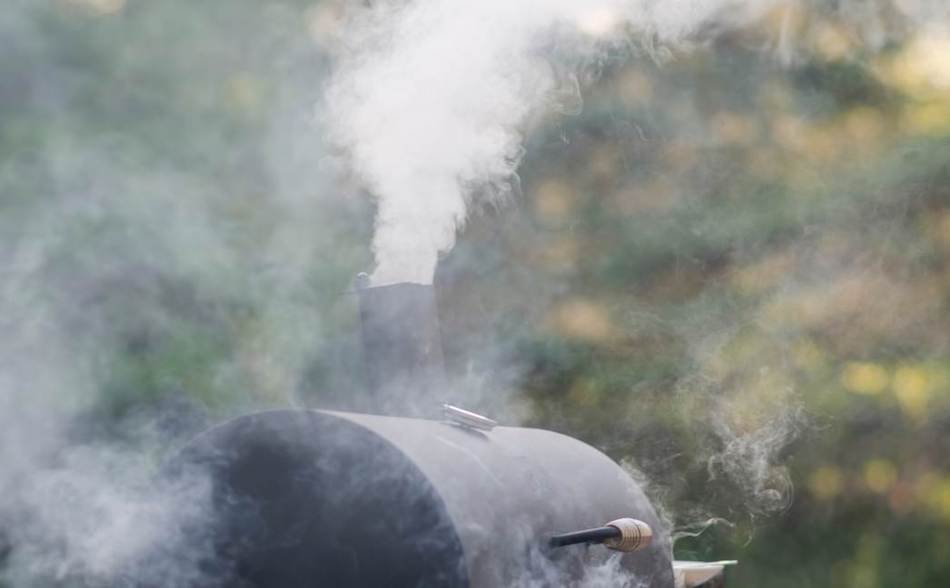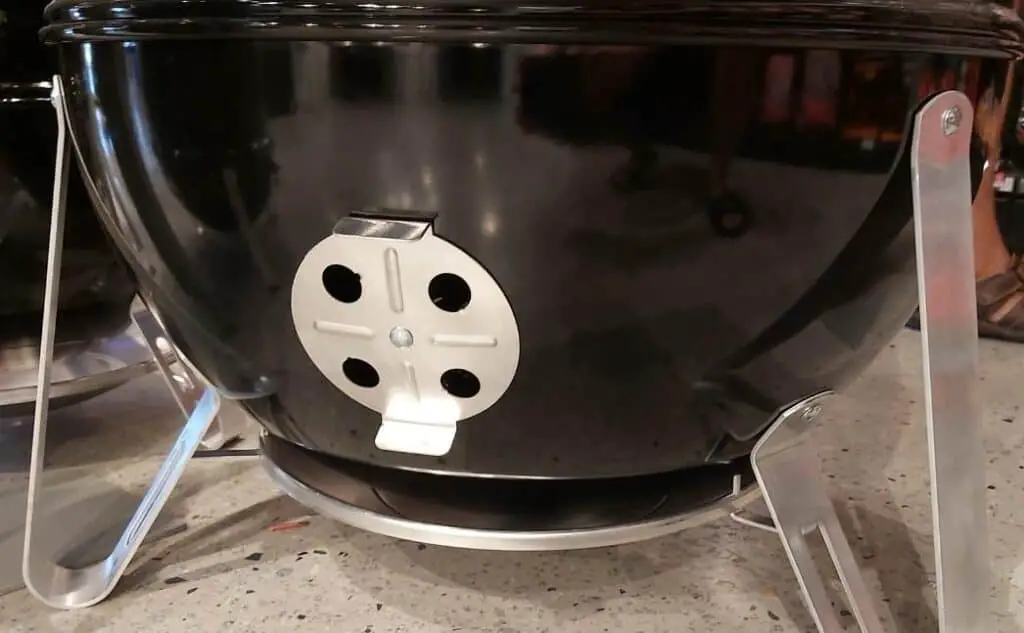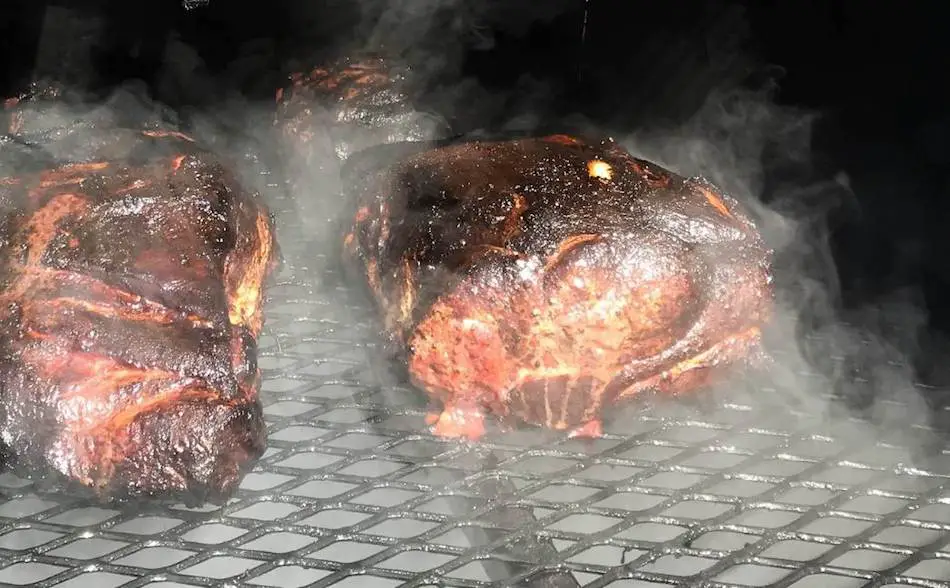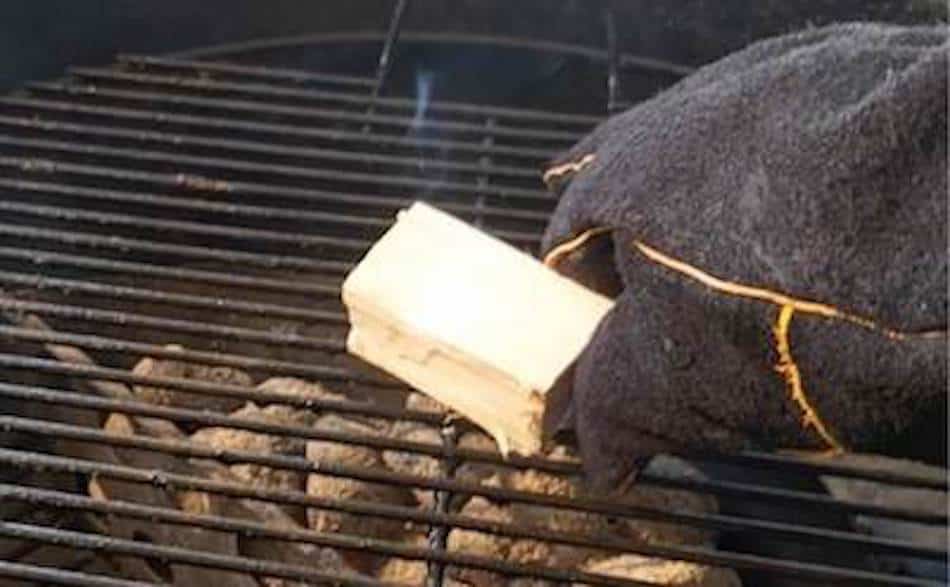
Too much smoke can be bad for your meat. It’s normal for a smoker to produce a thick, billowing white smoke when the coals are igniting, but once the fire is going, the smoke should settle. If your smoker is producing too much smoke, then something is wrong. To save your meat from tasting bitter, I found out all I could about excess smoke and how to avoid it.
Excess smoke from a smoker can negatively affect the flavor of meat, and there are four main causes: dirty smoker, lack of oxygen, charcoal ignition, too much wood, and cooking over the fire. To prevent excess smoke, it is important to clean the smoker regularly, pre-light charcoal in a chimney, ensure proper airflow through the fire, use an indirect cooking method, and use a limited amount of wood. Wrapping the meat in foil or using a water pan can also help reduce smoke while cooking. Different types of wood can have different flavors, but they do not significantly impact the amount of smoke produced.
| 5 Reason for Excess Smoke | Solution |
|---|---|
| Dirty smoker | Clean smoker regularly, at least every two cooks |
| Lack of oxygen | Ensure proper airflow through the fire by opening all vents when lighting the smoker and gradually closing them as the desired temperature is reached |
| Charcoal ignition | Pre-light charcoal in a chimney to avoid thick, white smoke |
| Cooking over the fire | Use an indirect cooking method with the fire to one side and the meat on the other, and place a drip pan under the meat to prevent a grease fire |
| Too much wood | Use a limited amount of wood, only a couple of chunks every few hours |
1. Dirty Smoker
A dirty smoker can produce excess dirty smoke which can negatively affect the flavor of the meat. To avoid this, it is important to clean the smoker regularly, at least every two cooks. This involves using a grill brush and scraper to remove grease, emptying the charcoal basket, and dusting around the smoker. This can help prevent a grease fire and ensure that the smoke produced is clean and does not negatively impact the flavor of the meat.
Important Points To Remember
- A dirty smoker can produce excess dirty smoke that can negatively affect the flavor of the meat.
- To prevent this, it is important to clean the smoker regularly, at least every two cooks.
- Cleaning the smoker involves using a grill brush and scraper to remove grease, emptying the charcoal basket, and dusting around the smoker.
- This can help prevent a grease fire and ensure that the smoke produced is clean and does not negatively impact the flavor of the meat.
For more information on this topic, you might be interested in: How Often Should I Clean My Smoker?
2. Charcoal Ignition
Charcoal produces thick, white smoke when it is first ignited, which can negatively affect the flavor of the meat in a smoker. To avoid this, it is best to pre-light the charcoal in a chimney before adding it to the smoker. This will allow the coals to burn clean by the time they are added to the smoker. Charcoal briquettes in particular can produce a lot of bad smelling white smoke. It is important to avoid adding meat to the smoker while the charcoal is in this initial phase of ignition, as the smoke will eventually clear after about 10 minutes. Using lump charcoal can provide a different flavor than briquette charcoal, but it does not significantly impact the amount of smoke produced.
Important Points To Remember
- Charcoal produces thick, white smoke when first igniting, which is normal but should be avoided when adding meat to the smoker.
- After about 10 minutes, the white smoke will clear and the coals will burn clean.
- Charcoal briquettes in particular will produce a lot of bad smelling white smoke.
- To avoid this, it is best to pre-light charcoal in a chimney before adding it to the smoker.
- Lump charcoal has a different flavor than briquette charcoal, and burns hotter and faster.
- Briquettes can produce bad smoke when igniting, but it settles once the coals are burning clean.
3. Lack Of Oxygen
Smoldering wood can produce excess smoke in a smoker, which can negatively affect the flavor of the meat. To prevent this, it is important to ensure proper airflow through the fire. This can be achieved by opening all the vents when lighting the smoker and gradually closing them as the desired temperature is reached. It is also important to avoid closing off the vents too much, as this can cause the wood to smoulder and produce excess smoke. To ensure a clean burn, add wood to the fire once the target temperature has been reached, but be sure not to close off the vents too much.

Important Points To Remember
- Smoldering wood can cause excess smoke in a smoker.
- Lack of airflow through the fire, caused by closed off vents, can lead to wood smoldering.
- To prevent this, open all vents when lighting the smoker and gradually close them as the desired temperature is reached.
- Avoid closing off the vents too much to prevent smoldering.
- Once the target temperature is reached, add wood to the fire, but be sure not to close off the vents too much.
4. Cooking Over Fire
Cooking directly above the fire can produce excess smoke and increase the risk of a grease fire in a smoker. To prevent this, it is recommended to use an indirect cooking method with the fire to one side of the smoker and the meat on the other, and to place a drip pan under the meat. The indirect cooking method is the best way to cook low-and-slow, as it helps to prevent excess smoke and reduce the risk of a grease fire.

Important Points To Remember
- Cooking directly above the fire can produce excess smoke and increase the risk of a grease fire.
- To prevent this, use an indirect cooking method with the fire to one side of the smoker and the meat on the other.
- Place a drip pan under the meat to avoid a grease fire.
- The indirect cooking method is the best way to cook low-and-slow.
5. Too Much Wood
Using too much wood, or wood chips and wood pellets that burn too quickly, can cause excess smoke in a smoker. To reduce smoke while cooking, it is recommended to wrap the meat in foil during the second part of the cook and to use a limited amount of wood. The type of wood used does not significantly impact the amount of smoke produced, but using a charcoal chimney to pre-light coals can help ensure clean smoke. Charcoal is primarily a heat source and should be fully alight before being added to the smoker, while wood provides most of the flavor in smoked meat. To ensure clean smoke, it is important to pre-light coals in a chimney, avoid cooking above the fire, and use a limited amount of wood.

Important Points To Remember
- Using too much wood can cause excess smoke in a smoker.
- Only a couple of chunks of wood every few hours are needed.
- Wrapping the meat in foil during the second part of the cook can help reduce smoke.
- The type of wood used does not significantly impact the amount of smoke produced.
- Wood chips and wood pellets will burn fast and produce a lot of smoke in a short period.
- Using a charcoal chimney to pre-light coals is the best way to ensure clean smoke.
- Charcoal is primarily a heat source and should be fully alight before being added to the smoker.
- Wood provides most of the flavor in smoked meat.
- To ensure clean smoke, pre-light coals in a chimney, avoid cooking above the fire, and use a limited amount of wood.
Cleaning And Maintaining Your Smoker
| Smoker Type | Frequency of Cleaning |
|---|---|
| Charcoal | Every 2 cooks |
| Electric | Every 4-5 cooks |
| Pellet | Every 4-5 cooks |
| Gas | Every 4-5 cooks |
Cleaning Your Smoker – Key Points
- Cleaning and maintaining your smoker is important for producing good quality smoked meat
- A dirty smoker can cause problems such as grease fires and bad smoke that will affect the taste of the meat
- Regular cleaning and maintenance is the best way to avoid these issues
- As a general rule, clean your smoker every two or three cooks: charcoal smokers should be cleaned every two cooks, while electric, pellet, and gas smokers can be cleaned every four or five cooks
- Pellet grills should have the fire pot vacuumed before each use
- Cleaning the smoker while it is still hot is easiest and helps prevent the build-up of creosote, a substance that can make the meat taste bitter
- Grease fires should be avoided because they can cause temperature spikes and excess smoke that can affect the taste of the meat
- To prevent grease fires, clean grill grates and remove lumps of grease, empty the grease tray, and use a drip tray to catch any grease drippings
- Grease pans at the bottom of the smoker should be emptied and cleaned regularly to prevent the build-up of bad vapors that can affect the taste of the meat
- Vents and airflow should be kept clear to maintain proper temperature control during the smoking process
- The most advanced thermometer on the market, the FireBoard, allows for remote control and monitoring via phone, and can hold up to six meat probes while recording cook data in the cloud.
| Maintenance Task | When to Perform |
|---|---|
| Scrape grill grates | Before each use |
| Remove lumps of grease | Before each use |
| Clean grease pan | Every 2-3 cooks |
| Vacuum fire pot (pellet grills) | Before each use |
| Wipe walls (to remove creosote) | After each cook |
| Empty grease tray | As needed |
| Keep vents and airflow clear | As needed |
Note: These recommendations are general guidelines and the actual frequency of cleaning and maintenance may vary depending on your specific smoker and how often it is used.
Good Smoke vs Bad Smoke
To ensure the best flavor in smoked meat, it is important to avoid over-exposure to black smoke, which can make the meat taste bitter. Instead, aim to produce thin, blue smoke, which is the best smoke for meat. This can be achieved by keeping the smoker clean and pre-lighting the coals. Meat only absorbs smoke for the first few hours of a cook, after which a crust develops that makes it harder for smoke to penetrate. Smoke is attracted to cold surfaces, so it is best to put the meat in the smoker straight out of the refrigerator rather than at room temperature.
Quality Smoke – Key Points
- Black smoke is bad smoke and can make meat taste bitter if over-exposed.
- The thin, blue smoke is the best smoke for meat.
- To produce thin, blue smoke, keep the smoker clean and pre-light the coals.
- Meat only absorbs smoke for the first few hours of a cook, after which a crust develops that makes smoke harder to penetrate.
- Smoke is attracted to cold surfaces, so it is best to put meat in the smoker straight out of the refrigerator rather than at room temperature.
Other Useful Tips
- Do not put meat in the smoker until the temperature has stabilized and all bad smoke has disappeared.
- Add more wood to the smoker later on to maintain a consistent flow of smoke for the first few hours.
- It is important to balance the amount of smoke used to avoid overpowering the flavor of the meat.
- By following the proper techniques and learning how to create good smoke, it is possible to achieve the perfect smokey flavor in smoked meat.
Related:
Which Lump Hardwood Charcoal Burns the Best?
